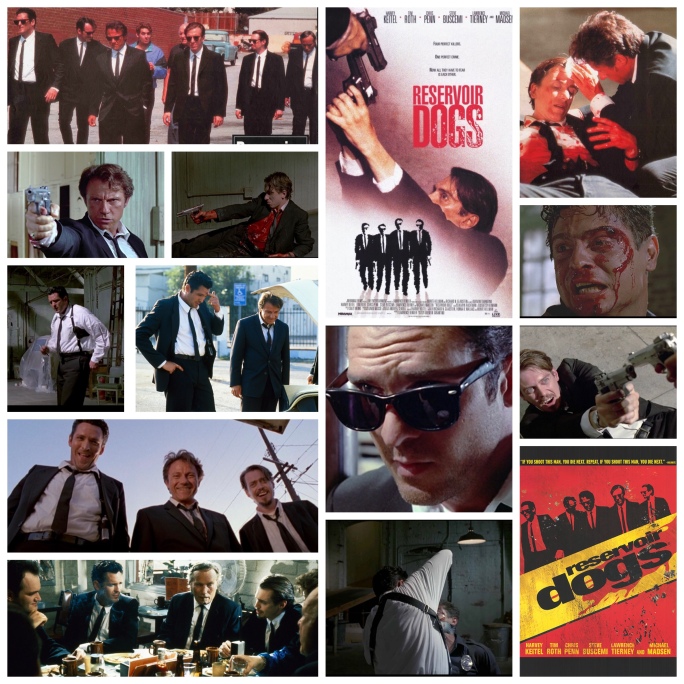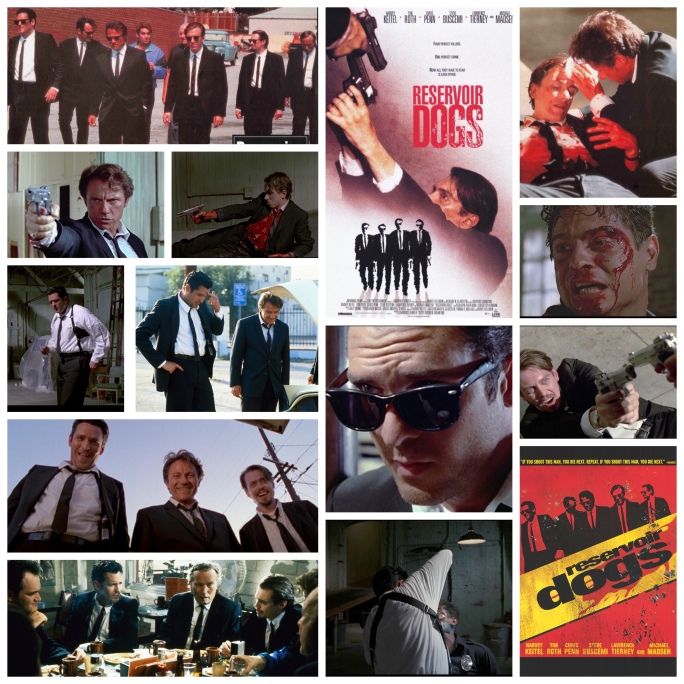Quentin Tarantino’s career has been vividly defined by all the beloved qualities which we hold dear in film: visuality, music, dialogue, emotion, conflict and especially character. His films contain some of the most captivating, idiosyncratic and unique people to ever grace the screen, played by an incredible lineup of actors, some of which he would go on to use time and time again. Below you will find my personal top ten picks from the rogues gallery of individuals who have appeared in his stories. Please keep in mind these are characters from films he has both written and directed only, not just ones he has written. Enjoy, and if you do, please share!
10. Zed, played by Peter Greene in Pulp Fiction.

Greene refused this part multiple times, causing Tarantino to hunt him down like a dog and basically beg him to play the role. When the director has a face in mind for a role and won’t quit like that, you’d better believe he’s gonna make magic with it if he ever manages to sway the actor. He does, and so does Greene, an actor with a distinct, sinister look who plays the absolute hell out of the character, spinning a small supporting turn into one of the most terrifying movie villains ever, and certainly the scariest character in Tarantino’s career. Everyone’s favourite redneck rapist sheriff, Greene leaves quite the unsettling impression with his work.
9. Texas Ranger Earl McGraw, played by. Michael Parks in Kill Bill, Grindhouse and From Dusk Till Dawn

Tarantino casted underrated acting chameleon Parks as this character several times, each appearance resulting in pure gold. My personal favourite has to his bit in Kill Bill Volume 1, where he’s called to the El Paso wedding chapel massacre. Parks can literally play any part thrown his way, be it melodramatic French Canadian drug runner, neo-nazi hit man or the laconic southwestern lawman archetype, which he nails down to the detailed mannerisms here. McGraw is a lynchpin of Tarantino lore and an absolute pleasure to see every time he pops up.
8. Captain Koons, played by Christopher Walken in Pulp Fiction

Walken balances weirdness and gravity like no other, often blurring the lines between the two to amusing and touching effect. When given what is perhaps the juiciest monologue ever written by Tarantino, Walken gives us a mesmerizing account of his time in the war, and his efforts to protect a coveted family heirloom which he then presents, with much ceremony, to a young Butch Coolidge. The film halts the momentum dead in its tracks to allow Walken to do his thing, completely off the leash and inhabiting his own special corner of the beloved film. He’s unforgettable, and makes a two minute appearance speak the volumes of eons.
7. Bill, played by David Carradine in Kill Bill

There’s a scene in Kill Bill Volume 2 where Uma Thurman discovers Bill waiting for her outside the wedding chapel, playing his pan flute. There’s an epic passage of Morricone music, and he looks her dead in the eye. Upon reviewing a rough cut, Tarantino turned to Carradine and said “I think this is your best moment of the film.” Carradine’s response was, “Hell, I think it’s the best moment of my whole career!.” Bill is a mythic, titular antagonist who is built up no end for the duration of the films, the ultimate badass villain, and when the climax arrives in the eleventh hour, Tarantino writes an exodus for the character that is far more personal, emotional and grounded than I imagine anyone saw coming. It’s a gift to Carradine and fans alike, a villain with depth and purpose who exists in a surreal comic book world where the people couldn’t be more human or real. Carradine purrs his way through the role of his career and on into legend.
6. Budd, played by Michael Madsen in Kill Bill

Tarantino brings out the best in Madsen, a purely charismatic dude who unfortunately makes a lot on unwatchable junky poo movies these days, squandering his obvious talent. This is is shining hour, playing Budd as a bitter backwater kid and younger sibling, nearing the end of his road and fermenting in bitter loneliness way out in the California desert. Madsen channels tough guys of the golden age as Budd, a rotten son of a bitch with a glint of humanity showing through his booze-dimmed eyes.
5. Hans Landa, played by Christoph Waltz in Inglorious Basterds

Quite possibly the most entertaining villain in Tarantino’s work, due the the exuberant and absolutely committed performance of Waltz, in a trailblazing turn that would put him on the map in a big way. Beaming from ear to ear in almost every scene with a charming grin that dissipates occasionally, showing traces of the spider beneath, he’s a wonder in the role, a nazi A-hole rotten straight to the core. He doesn’t even possess any constitution or debt of faith in the cause which his smartly emblazoned SS uniform advertises; he’s in it for himself only, which is one more despicable quality to add to the list of traits one might use to define him. Perhaps the biggest Basterd of them all, and a joy to watch.
4. Vincent Vega, played by John Travolta in Pulp Fiction

Pulp Fiction kickstarted Travolta’s career back into gear in a huge way, and it’s easy to see why as we watch his Elvis-esque slickster prance about the screen with effortless, heroin addled coolness and one hell of a dance sequence. His hair deserves its own spinoff film, he steals scenes by simply laying low and playing the dude with flair that never makes itself overly known.
3. Mr. Blonde, payed by Michael Madsen in Reservoir Dogs

A stone cold psycho to the bone, Madsen relishes in brining this cop killing sadist to life, and dancing his way through one of the most iconic Tarantino scenes to date. Madsen has a rumbling threat to his work, a paced, portentous vibe that suggests the onset of a dangerous storm, but always seems to veer on the edge. With Mr. Blonde he crosses that line and shows us what a true madman looks like, without even raising his voice above a willowy growl. A class act in violent behaviour that laced with the blackest humour that we feel bad for laughing at. Mr. Blonde all the way.
2. Jules Winnfield, played by Samuel L. Jackson in Pulp Fiction

A rain of hellfire awaits any viewer who has the privilege of seeing Jackson bellow forth biblical fury in his first collaboration with Tarantino. He’s the life of the party in Pulp Fiction, an articulate, relentless loudmouth with a character arc that amusingly negates his belligerent nature and makes Jules all the more fascinating for it. Jack sonics at his most magnetic when he’s in Tarantino films, and this is mile zero, baby. Not for a second does the spark leave his eye, or the threat of violence evaporate from his wake. Criminals who ruminate on life, love and cunnilingus have become a goldmine for writers post Tarantino, and one which he only mined the first nuggets of. Jackson is ground zero for the character type, and fires it up in a way which none of us will ever forget.
1. The Bride a.k.a. Beatrix Kiddo, played by Uma Thurman in Kill Bill

Tarantino’s muse has been Uma Thurman since the days of Pulp Fiction, and here he writes a titanic revenge epic in which the actress gets to bare her claws and sink her teeth into the single most affecting and arrest in female role that he has ever written, also forging the best, or at least my favourite performance from any actor or actress in his films. The Bride is the revenge archetype, an angry blonde angel forsaken by her lover and dead set on a bloody warpath. Tarantino isn’t above writing in moments of stirring emotion, including the final twenty minutes of Volume two which is Thurman’s showcase piece as an actress and an achingly appropriate send-off for The Bride, as well as the one which she deserves.
Thanks for reading, more to come!
























